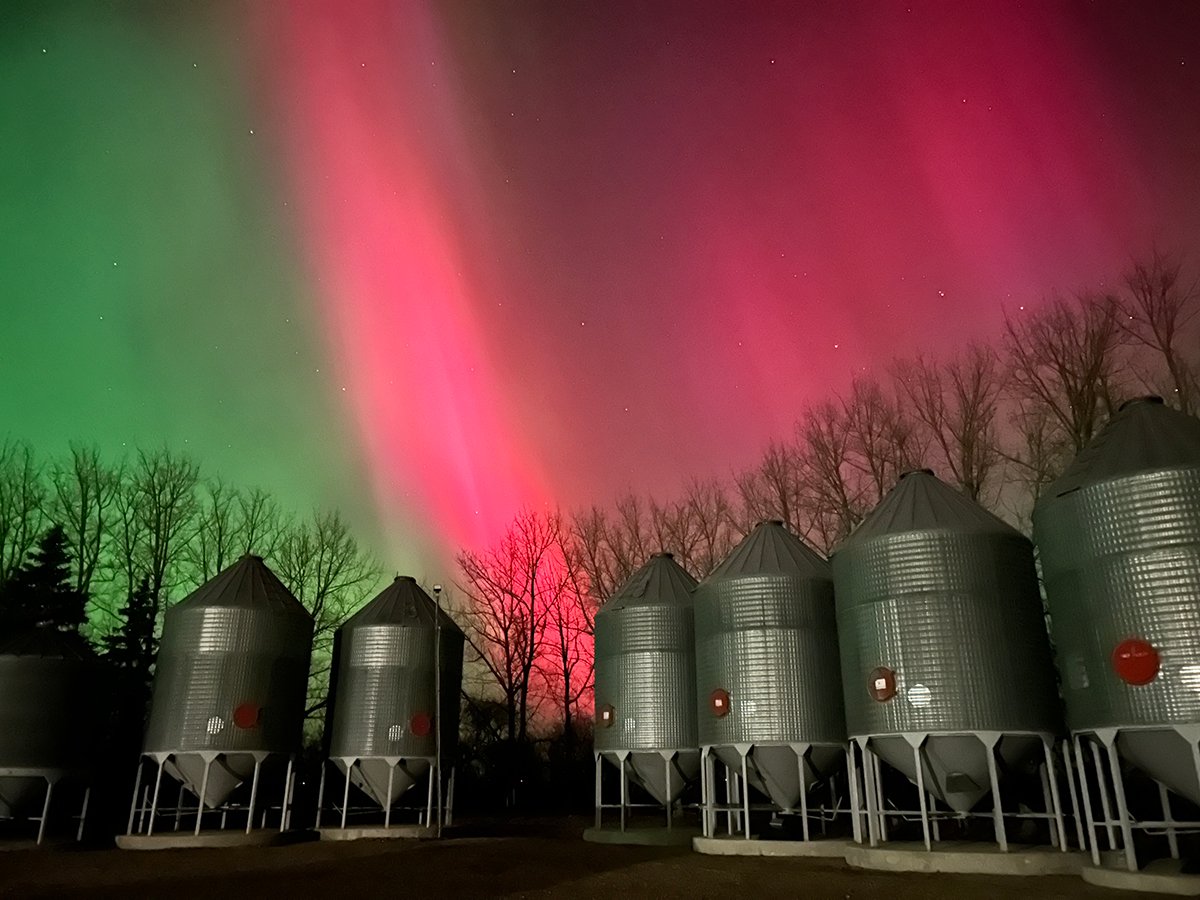OPAL, Alta. – In 1986, Russell Lakusta stood on a hill overlooking the rolling hills of the Redwater River valley and told his brothers that elk would look good on the hills.
Six weeks later the valley was fenced and 15 cow elk and one bull stood grazing there.
Another 14 years later, after a roller-coaster ride that knocked hundreds of elk farmers out of business, Helen and Russell Lakusta and their son, Don, are amongthe few remaining elk producers in the province.
“We enjoy the animals,” said Russell.
Read Also

Powerful solar storm lights up night time sky
Prairie skywatchers have been on high alert the last few nights as spectacular aurora displays have made the night time…
The family needed more than a picturesque view to survive the vicious highs and lows of the elk industry devastated by the discovery of chronic wasting disease in the Canadian herd. In 2000, South Korea, the most lucrative market for elk antlers, closed its borders to Canadian elk. Almost immediately the price of antler dropped to $10 a pound from $120. Few elk producers had the desire to wait out the recovery.
At one time the Lakusta family had more than 700 elk and bison on the farm northeast of Edmonton. Now, there are about 90.
The bison were an insurance policy in case the bottom fell out of the elk market.
“That was a very poor investment,” said Russell.
Before the Korean border closed, the family built an antler drying plant, another type of insurance policy. A combination of selling meat from the elk and bison, and processing and selling elk antler has allowed the family to carve out an income.
A wooden sandwich board sign at the end of the driveway on the busy highway between Edmonton and Fort McMurray is the only advertising used to market the meat. Customers stop in at the farm store for their supply of buffalo and elk roasts, steaks, smokies, sausage rolls and dozens of other meat products. Don estimates 75 percent of the customers are a repeat trade. Most of those initially stop in at the recommendation of a friend.
While they’re picking up their month’s supply of elk steaks they might try a bottle of elk velvet antler capsules, antler slices, elk velvet antler shampoo, hand cream or dog treats.
“Processing changed a lot of things,” said Don.
Instead of selling raw antler to buyers in China, drying and processing the antlers has allowed the family to capture additional profit and sell directly to Canadian and overseas customers.
“It’s what we’re surviving on here,” said Russell.
In the heyday of the elk business, the farm processed 40,000 lb. of elk antler, worth about $7 million. Big money meant big costs, hired labour and extra feed for the animals. When the bottom dropped out of the market, the family scaled back and concentrated on selling meat and elk antler velvet direct to Asian pharmacies and herbalists in Vancouver and Ottawa.
After 14 years the family has developed close relationships with their customers. About every six weeks Russell makes a delivery of elk slices and powder to Vancouver markets.
A one kilogram package of elk velvet slices sells for $500. The slices look like thick, flattened potato chips and are used for teas or broths. A smaller 75 gram package sells for $285.
Despite the development of Canadian markets for their elk antler velvet, an opening of the Korean border would provide a boost and encourage producers to get back into the business.
“If the border opened tomorrow the industry would double. Who expected it to be closed this long? That is what hurt the industry. The biggest consumer in the world is Korea,” said Don.
The border for elk antler was closed three years before the first Canadian case of BSE. All levels of government have worked hard to reopen borders to Canadian beef, but have made little effort to negotiate a reopening of the Korean border, said Russell.
Until that happens, the family will concentrate on drying and slicing elk antlers, selling meat and enjoying the animals.
“Box by box it goes. It keeps us busy and it’s fun,” said Russell.














